Why Hardware Model Normalization Matters in ServiceNow?
In an organization, data gets entered to the CMDB from many sources like ServiceNow Discovery, SCCM, or manual imports , etc. This improves visibility of the data but also causes duplicate hardware models.
For example,
• From SCCM → Macbook Pro 15”
• From Discovery → Macbook Pro 15” MR962LL/A
• From other source → Macbook Pro 15 MR962LL
All are the same laptop but are created as a different model in the Hardware model table, causing confusion, and may lead to wrong reports. This is where Hardware Model Normalization in ServiceNow comes into the picture.
What is Hardware Model Normalization?
Hardware Model Normalization standardizes hardware model data for CMDB. It keeps details like manufacturer, product, model, and device type in a consistent format, no matter the source. When enabled, it compares hardware model data with the ServiceNow Hardware Model Normalization Content Service. The service finds variations of the same model and links them to one normalized model name.
In the Macbook example, all three variations (Macbook Pro 15”, Macbook Pro 15” MR962LL/A, Macbook Pro 15 MR962LL) link to one normalized model in the Hardware Model Library, keeping the CMDB clean and accurate.
How to Normalize Your Asset Data:
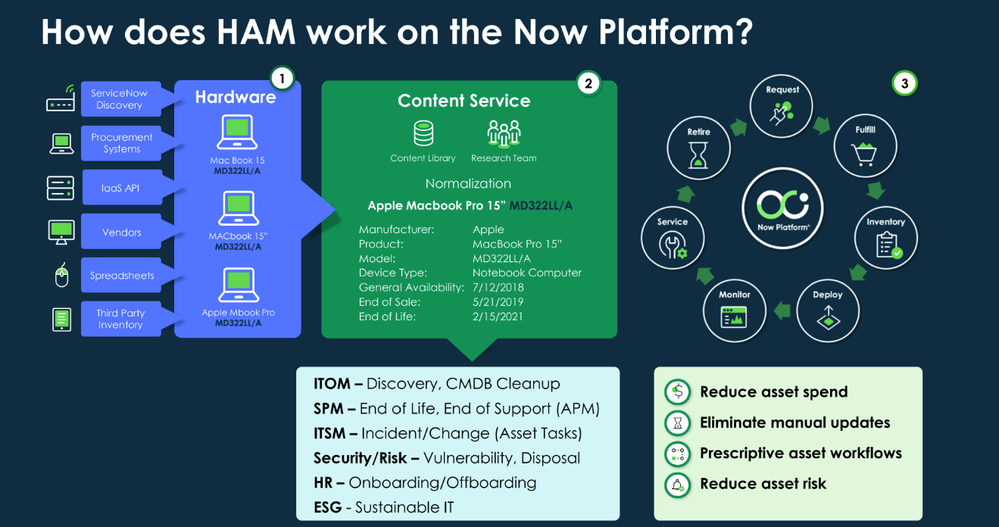
How Does it Work in ServiceNow?
1. Plugin Activation
Hardware Model Normalization (com.sn_hwnorm) is automatically activated with the Hardware Asset Management (HAM) [sn_hamp] plugin.
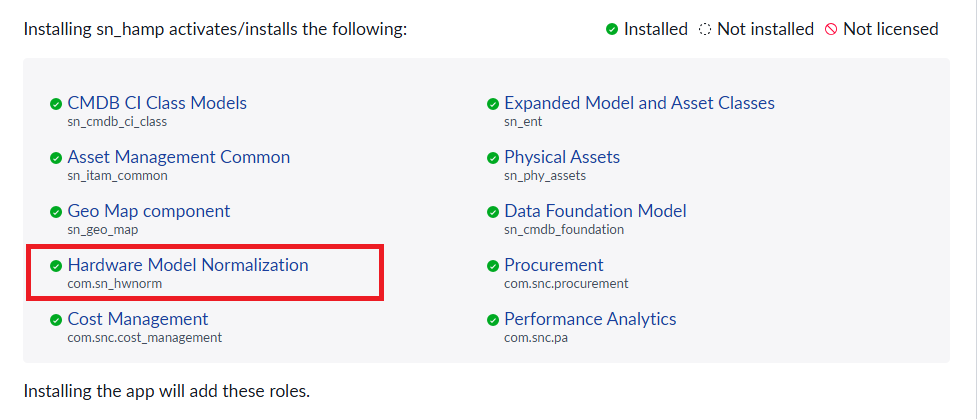
2. Scheduled Normalization Job
A scheduled job called “HAM – Hardware Normalization” runs daily.
It doesn’t change or delete original data but updates fields like:
• Normalized Product
• Normalized Manufacturer
• Normalized Model
• Normalized Device Type
This field will be available in the Hardware model table.
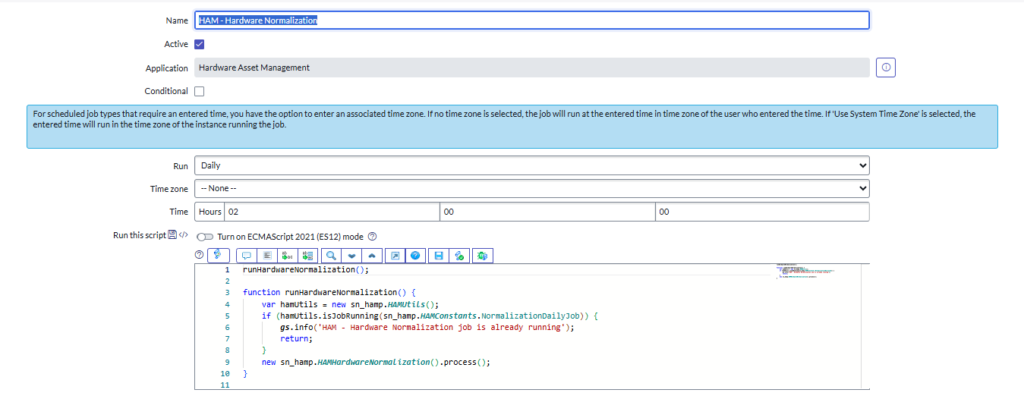
3. Normalization Status
Each model gets a status such as:
• New
• Normalized
• Manually Normalized
• Partially Normalized
• Manufacturer Normalized
• Match Not Found
4. Reverting Normalization
If needed, normalization can be reverted. This resets models back to their original state.
You can revert a normalization from a UI action “Revert Normalization” which is available on the normalized Hardware Model Record.
Once the model is Reverted back from normalization, the normalization status for the model changes to Match Not Found.
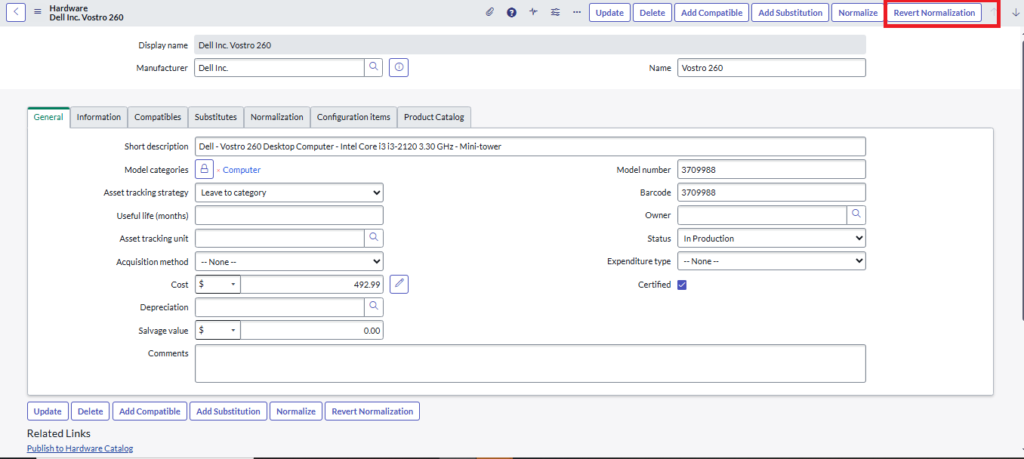
Example Scenario:
This issue happens every day in IT environments.
For example, An Organisation having four naming variations of the HP EliteBook 645 G10 coming in through discovery and other sources. Without normalization, each variation would appear as a separate model, fragmenting their data resulting confusion in identification of model.
With Hardware Model Normalization, all those variations were consolidated into one Normalized Model record, making reports and asset tracking far easier.
Benefits of Hardware Model Normalization:
• Consistency
All duplicate entries are tied to one standardized model.
• Reporting
Reports show the correct number of assets and their details.
• Operational Efficiency
Having fewer duplicates makes it easier for IT and asset teams to work without confusion.
• Support for ITAM & HAM
Standardized models create a strong base for managing hardware, such as tracking their lifecycle and staying compliant.
Additional Features:
• Opt-in to Content Service
Companies can choose to share safe (anonymized) hardware and consumable model data with ServiceNow. This helps improve the global Content Service.
• Import & Export Data
If you are using ServiceNow on-premise, you can manage your hardware library by importing or exporting data in a zip file.
• Custom Models
If a hardware model is not available in the Content Service, you can create your own product or model and still use normalization.
• Reports
ServiceNow provides ready-made reports, such as “Hardware Normalization Dashboard”, that show how much of your hardware data is normalized.
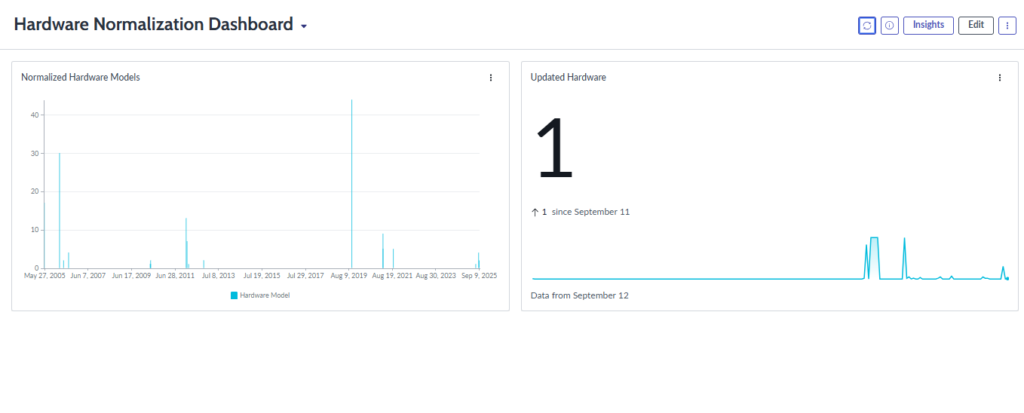
Conclusion
Hardware Model Normalization might feel like a small technical detail, but it solves one of the biggest problems in IT—duplicate and inconsistent data. By ensuring every model in your CMDB points to a standardized version, it provides clarity, accuracy, and confidence for asset management.
By: Sabyasachi Sahoo
